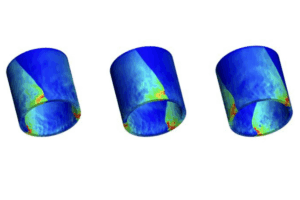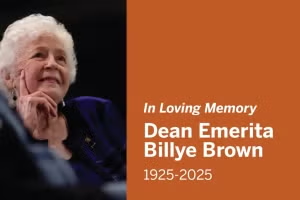AUSTIN, Texas—Insights into the origins of the universe, the geological prehistory of Texas, the history of Tex-Mex folk music, immigration trends, and the state of health care in Texas are authored by top researchers from The University of Texas at Austin in the latest issue of Discovery,the University’s research magazine.
At the Frontiers of Research in Texasis the theme for the nine-article issue, which can be seen on the World Wide Web at www.utexas.edu/admin/opa/pubs/discovery/discovery.html.
The diverse areas of research covered in the issue begin with Dr. Frank Bash, director of UT’s McDonald Observatory, describing how the new high-magnitude Hobby-Eberly telescope might help solve some mysteries related to the “Big Bang” theory on creation of the universe.
Dr. Ian W.D. Dalziel, associate director of the Institute for Geophysics and professor of geological sciences at UT Austin, begins his article asking, “Where on Earth is Texas?” and explores a theory that at one time it was very close to today’s Africa.
Dr. Thomas R. Hester, a professor of anthropology and director of the Texas Archaeological Research Laboratory at UT Austin, writes about the roots of archaeology in Texas and how artifacts are helping us better understand the civilizations that preceded us in this part of the world.
Music as an archive is explored by Dr. Jaime Nicolopulos in an article titled, Tejano Corridos. He said these narrative ballads, sung by Texas Mexicans during a century of political and economic injustice, gave voice to messages of identity and resistance that could find few other outlets. The corridos,handed down from one generation to the next, have become an archive of specific incidents, triumphs or outrages experienced by the community.
Dr. Gilberto Cardenas, a former professor of sociology at UT Austin who last year became assistant provost and director of the Center for Latino Studies at the University of Notre Dame, tells the story of today’s statewide immigration trends and issues.
Dr. Mary Louise Adams discusses Health Care for Minority Womenand an effort to encourage African American women in Texas to participate in early bereast cancer detection. Adams is an assistant professor of clinical nursing at the UT Austin School of Nursing.
Dr. Rebecca Richards-Kortum and Dr. Michelle Follen write about the development of a new optical tool based on the use of fluorescense spectroscopy to achieve early detection of cervical cancer. Richards-Kortum is professor of electrical and computing engineering at UT Austin and Follen is professor of gynecological oncology and director of colposcopy at the UT M.D. Anderson Cancer Center and the UT Health Science Center in Houston.
Dr. Sean Michael Kerwin, an associate professor of medicinal chemistry in the UT Austin College of Pharmacy, writes about cutting edge research to design molecules that short circuit cancer cells.
An article by Dr. Melba Crawford examines new remote sensing technologies for coastline mapping which are helping researchers to acquire critical information about the changing ecosystems along the Texas coast. Crawford holds an Engineering Foundation Professorship at UT Austin, where she is a faculty member in the mechanical engineering department.
In writing about the array of diverse articles, UT Austin President Larry R. Faulkner said, “The great culture of inquiry at UT is critical to the future of Texas. Our state needs scholarship and research that expands the boundaries of knowledge in order to lead in the global economy of the next century. Moreover, research transforms what we understand about our world, and in doing so, transforms the human experience.”



